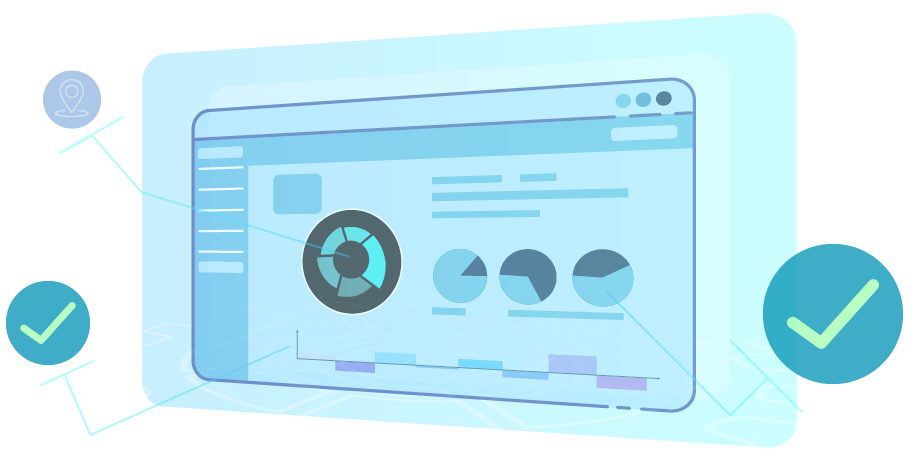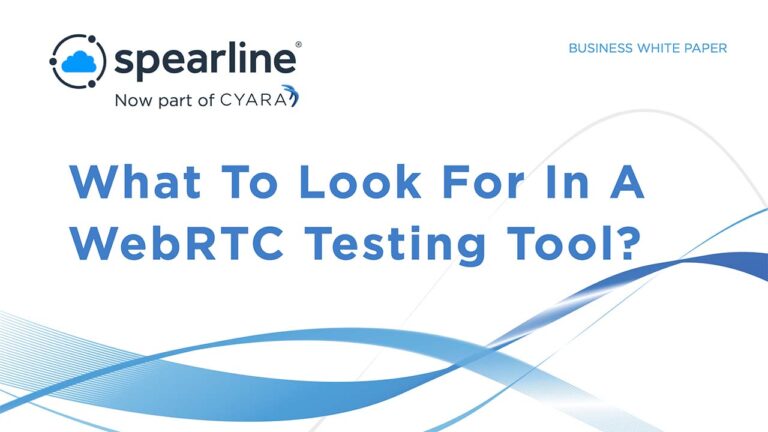Cyara testRTC
Exceptional WebRTC solutions, delivered by best-in-class service

Meet Cyara testRTC, your solution for WebRTC testing, monitoring and support capabilities built for the new generation of WebRTC-based communications applications
Leverage the world’s most powerful WebRTC testing and monitoring platform, for companies who are serious about WebRTC. With rapid-fire emergence of more, newer, better ways to offer users the products and services they are seeking, comes the responsibility of ensuring these technologies can deliver the flawless experiences your users expect.
WebRTC applications facilitate video chats and digital meetings, opening up a whole new realm of possibilities for communicating with your users. But in order to be effective, they need to work. How do you test these systems proactively to ensure quality of service? How do you monitor these systems to maintain flawless performance through busy seasons, network instability, and other unforeseen issues that can wreak havoc on your CX?
Cyara testRTC
What we do
We empower businesses to accelerate their testing, monitoring, and support activities of their WebRTC applications.
How we do it
We simulate or monitor real users to determine the behavior patterns of your users and deployment.
Our platform
Cyara testRTC’s global cloud-based infrastructure offers on-demand resources for WebRTC testing and development.
Best-in-class automation, monitoring & analysis solution
Cyara delivers self-service tools to meet your WebRTC needs, whether it’s regression, performance, and stress testing, user connectivity, or quality tracking and troubleshooting.
Cyara testRTC helps your business:
Reduce & prevent WebRTC issues
Reduce AHT & MTTR
Decrease customer & staff churn
Improve customer experience & loyalty
Replicate your users’ experience
Protect your brand reputation
Reduce operational costs & improve revenue
Reduce fault rate & escalations to engineers
Cyara testRTC Helps With:
Testing
Self-service tools to assist you with WebRTC testing
Our testing capabilities offer comprehensive analysis and expert insights in an innovative tool which has been developed in line with today’s business needs. With objective measures and customized metrics, you can ensure your WebRTC application works flawlessly for your users.
User Monitoring
Understand behavior and user experience
With sophisticated automation capabilities you can monitor real user traffic and metrics to pinpoint issues in real-time. Monitor uptime and media quality of your service with our active or passive monitoring tools.
Troubleshooting
Continuously monitor network quality from any location
Quickly resolve issues with greater visibility into essential WebRTC information about your user’s network setup. Get continuous insight and alerts about issues as they occur, so you can address problems before they impact users.
Support
Solve WebRTC connectivity and quality issues faster for your users
Understand your users’ network configuration within minutes with our WebRTC support tools. Offer a self-service troubleshooting approach to agents working from home, or continuously monitor network service, reducing average handling time for your support teams.
Infrastructure Monitoring
Get immediate notification when your application fails a WebRTC scenario
Schedule tests to run at intervals you choose, utilizing real web browsers to interact with your application and simulate live usage. Identify bottlenecks and any issues that could interfere with a seamless user experience, and alert your team to any deviations from normal performance.
Cyara Automated CX Assurance Platform
Cyara testRTC is part of the award-winning Cyara Automated CX Assurance Platform which enables companies to deliver better CX with less effort, cost, and risk. Cyara supports the entire CX software development lifecycle, from design to functional and regression testing, load testing, and production monitoring, ensuring enterprises can build flawless customer journeys across voice and digital channels.
Resources
White Paper: What to Look For in a WebRTC Testing Tool
eBook: Guide to Effective Number Testing
Learn More
See how the Cyara Automated Customer Experience Assurance Platform can help you achieve your CX Assurance goals, and delight your customers.



